-
Flooding, accelerated sea-level rise in Miami over last decade
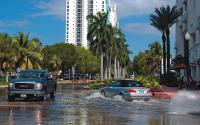
Miami Beach flood events have significantly increased over the last decade due to an acceleration of sea-level rise in South Florida. Scientists suggest that regional sea-level projections should be used in place of global projections to better prepare for future flood hazards in the region.
-
-
Water problems in Asia’s future?
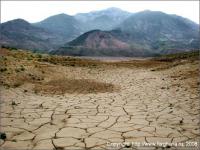
Economic and population growth on top of climate change could lead to serious water shortages across a broad swath of Asia by the year 2050. Having run a large number of simulations of future scenarios, the researchers find that the median amounts of projected growth and climate change in the next thirty-five years in Asia would lead to about one billion more people becoming “water-stressed” compared to today.
-
-
Quantifying climate-driven impacts on the Colorado Basin, developing response strategies
The Colorado basin — roughly 11 percent of the United States — directly supports water supply for more than thirty million people, accounts for approximately 15 percent of U.S. crops and livestock, and provides 53 gigawatts of power generation capacity. Climate-driven heat-stress and forest mortality on the Colorado River watershed are expected to reduce river flows basin-wide out to the year 2100.
-
-
Florida’s Turkey Point nuke pollutes Biscayne Aquifer, Biscayne National Park
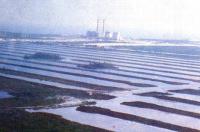
Contaminated water originating from the cooling canal system at Florida Power & Light’s (FPL) Turkey Point facility is reaching Biscayne Bay, threatening South Florida’s drinking water supply and Biscayne National Park. The facility is one of Florida’s biggest daily water users and discharges at least 600,000 pounds of salt and other contaminants directly into the Biscayne Aquifer on a daily basis. The Biscayne Aquifer is a “sole source,” federally designated aquifer that serves more than three million people.
-
-
Expanding use of recycled water would benefit the environment, human health
More than 1 in 9 people around the world, about 750 million, do not have access to safe, clean drinking water, and the problem is expected to worsen in step with rising greenhouse gas concentrations, population increases and climate change. Researchers found that found that recycled water has great potential for more efficient use in urban settings and to improve the overall resiliency of the water supply.
-
-
FEMA rejects Michigan governor's request for more Flint money
The Federal Emergency Management Agency (FEMA) has again rejected a request from Michigan governor Rick Snyder for additional federal assistance to address the lead poisoning in Flint, Michigan’s water supply. The contamination disaster was caused by a Snyder-appointed city manager’s decision to shut down the city’s access to water filtration systems as a cost-cutting measure.
-
-
Fertilizer applied to fields today will contaminate water for decades
Nitrogen fertilizer applied to farmers’ fields has been contaminating rivers and lakes and leaching into drinking water wells for more than eighty years. Dangerous nitrate levels in drinking water could persist for decades, increasing the risk for blue baby syndrome and other serious health concerns.
-
-
Warmer spring temperatures reduce Colorado River flows
Warmer-than-average spring temperatures reduce upper Colorado River flows more than previously recognized, according to a new report. The study, the first to examine the instrumental historical record, discovers that temperature has played a larger role in streamflow and in exacerbating drought since the 1980s.
-
-
Groundwater deficit growing in important western U.S. aquifers
By 2050, climate change will increase the groundwater deficit even more for four economically important aquifers in the Western United States, a new report says. Groundwater deficits are expected to worsen in four important aquifers, creating a precarious balance between usage and recharge. The new report is the first to integrate scientists’ knowledge about groundwater in the American West with scientific models that show how climate change will affect the region.
-
-
Water storage strategies in Sub-Sahara Africa
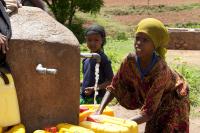
Direct abstraction of water from rivers through ponds and pumping devices seems the most attractive water storage option in Ethiopia. However, the funding agencies that may be interested in investing in such a storage system have to consider that better access to credit, and clear abstraction policies should be ensured.
-
-
Chlorine-free water tastes better, and may be healthier
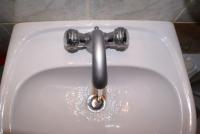
Chlorinated tap water is the norm around the world, but the experiences of several European countries is that it does not have to be. The benefits of foregoing chlorine include better-tasting and, potentially, healthier water.
-
-
Virginia Tech continues addressing water crisis in Flint, Michigan

Last summer, a Flint resident reached out more than 500 miles to Virginia Tech for help, after officials said the orange water flowing into residents’ homes was OK to drink. That first round of testing was a wake-up call to the nation. Virginia Tech students and discovered more than 133 times the amount of lead on average was in the water than the maximum allowed by the U.S. Environmental Protection Agency (EPA).
-
-
Four billion people affected by severe water scarcity

There are four billion people worldwide who are affected by severe water scarcity for at least one month a year. This alarming figure is much higher than was previously thought. In the first research of its kind, researchers identified people’s water footprint from month to month, and compared it to the monthly availability of water.
-
-
Putting a price on groundwater, other natural capital
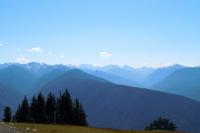
Most people understand that investing in the future is important, and that goes for conserving nature and natural resources, too. But in the case of investing in such “natural” assets as groundwater, forests, and fish populations, it can be challenging to measure the return on that investment. A Yale-led research team has adapted traditional asset valuation approaches to measure the value of such natural capital assets, linking economic measurements of ecosystem services with models of natural dynamics and human behavior.
-
-
Battery technology would charge up water desalination
A new technology, which charges batteries for electronic devices, could provide fresh water from salty seas, says a new study. Electricity running through a salt water-filled battery draws the salt ions out of the water.
-
- All
- Regional
- Water
- Biometrics
- Borders/Immig
- Business
- Cybersecurity
- Detection
- Disasters
- Government
- Infrastructure
- International
- Public health
- Public Safety
- Communication interoperabillity
- Emergency services
- Emergency medical services
- Fire
- First response
- IEDs
- Law Enforcement
- Law Enforcement Technology
- Military technology
- Nonlethal weapons
- Nuclear weapons
- Personal protection equipment
- Police
- Notification /alert systems
- Situational awareness
- Weapons systems
- Sci-Tech
- Sector Reports
- Surveillance
- Transportation
Advertising & Marketing: advertise@newswirepubs.com
Editorial: editor@newswirepubs.com
General: info@newswirepubs.com
2010-2011 © News Wire Publications, LLC News Wire Publications, LLC
220 Old Country Road | Suite 200 | Mineola | New York | 11501
Permissions and Policies
Editorial: editor@newswirepubs.com
General: info@newswirepubs.com
2010-2011 © News Wire Publications, LLC News Wire Publications, LLC
220 Old Country Road | Suite 200 | Mineola | New York | 11501
Permissions and Policies
